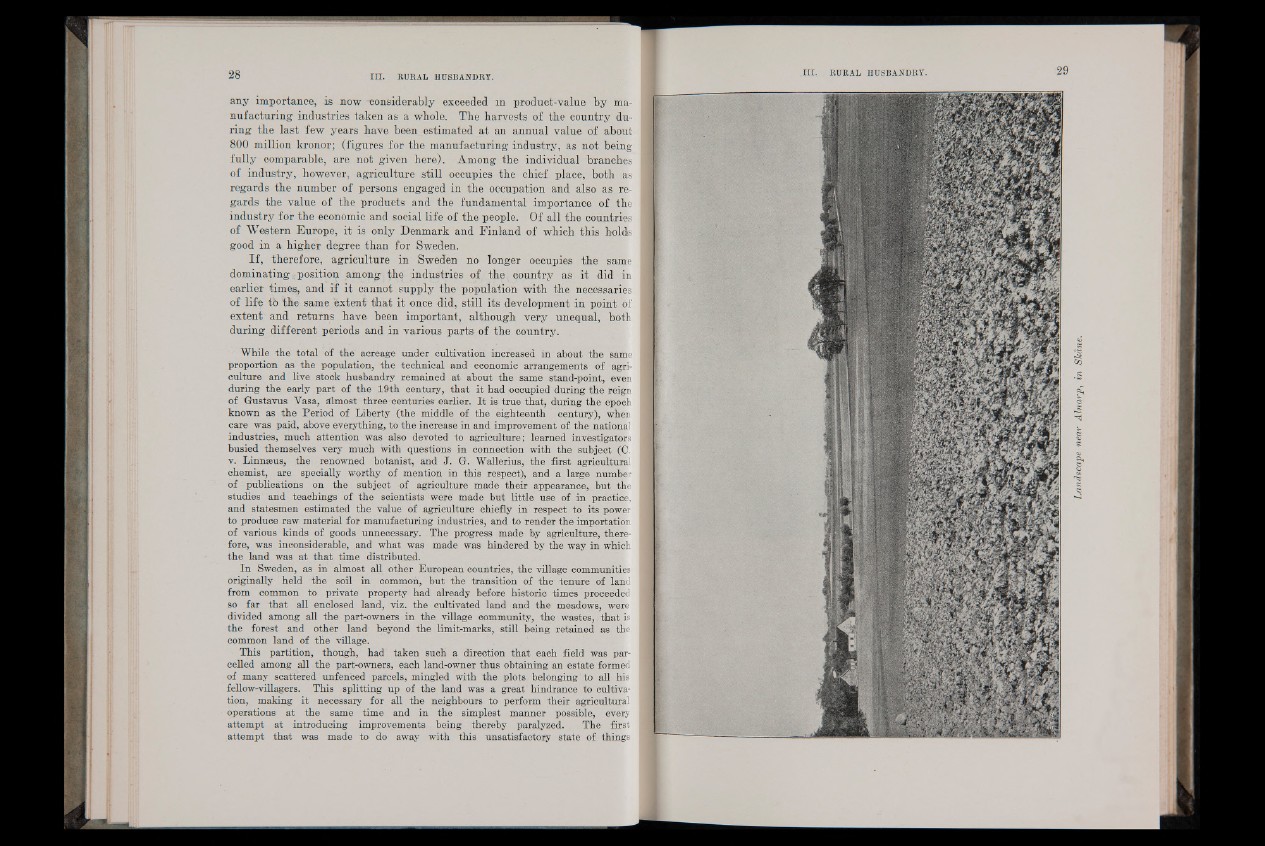
any importance, is now -considerably exceeded in product-value by manufacturing
industries taken as a whole. The harvests of the country during
the last few years have been estimated at an annual value of about
800 million kronor; (figures for the manufacturing industry, as not being
fully oomparable, are not given here). Among the individual branches
of industry, however, agriculture still occupies the chief place, both as
regards the number of persons engaged in the occupation and also as regards
the value of the products and the fundamental importance of the
industry for the economic and social life of the people. Of all the countries
of Western Europe, it is only Denmark and Finland of which this holdis
good in a higher degree than for Sweden.
If, therefore, agriculture in Sweden no longer occupies the same
dominating : position among th^ industries of the country as it did in
earlier times, and if it cannot supply the population with the necessaries
of life to the same extent that it once did, still its development in point of
extent and returns have been important, although very unequal, both
during different periods and in various parts of the country.
While the total of the acreage under cultivation increased in about the same
proportion as the population, the technical and economic arrangements of agriculture
and live stock husbandry remained at about the same stand-point, even
during the early part of the 19th century, that it had occupied during the reign
of Gustavus Vasa, almost three centuries earlier. It is true that, during the epoch
known as the Period of Liberty (the middle of the eighteenth century), when
care was paid, above everything, to the increase in and improvement of the national
industries, much attention was also devoted to agriculture; learned investigators
busied themselves very much with questions in connection with the subject (C.
v. Linnseus, the renowned botanist, and J. G. Wallerius, the first agricultural
chemist, are specially worthy of mention in this respect), and a large number
of publications on the subject of agriculture made their appearance, but the
studies and teachings of the scientists were' made but little uSe of in practice,
and statesmen estimated the value of agriculture chiefly in respect to its power
to produce raw material for manufacturing industries, and to render the importation
of various kinds of goods unnecessary. The progress made by agriculture, therefore,
was inconsiderable, and what was made was hindered by the way in which
the land was at that time distributed.
In Sweden, as in almost all other European countries, the village communities
originally held the soil in Common, but the transition of the tenure of land
from common to private property had already before historic times proceeded
so far that all enclosed land, viz. the cultivated land and the meadows, were
divided among all the part-owners in the village community, the wastes, that is
the forest and other land beyond the limit-marks, still being retained as the
common land of the village.
This partition, though, had taken such a direction that each field was parcelled
among all the part-owners, each land-owner thus obtaining an estate formed
of many scattered unfehced parcels, mingled with the plots belonging to all his
fellow-villagers. This splitting up of the land was a great hindrance to cultivation,
making it necessary for all the neighbours to perform their agricultural
operations at the same time and in the simplest manner possible, every
attempt at introducing improvements being thereby paralyzed. The first
attempt that was made to do away with this unsatisfactory state of things